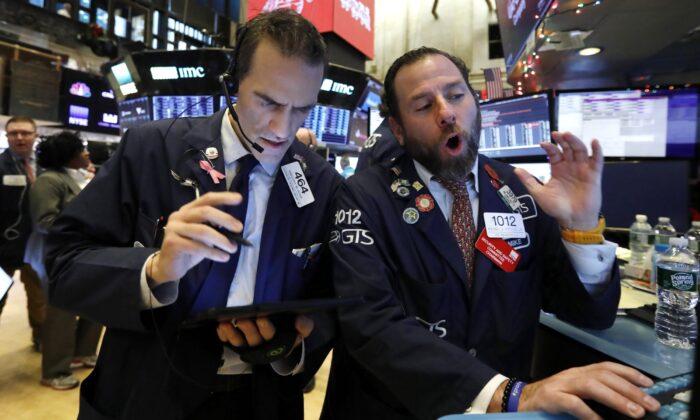U.S. stock index futures fell from their record highs on Jan. 6 as growing tensions between the United States and Iran sparked a pivot to safer assets, with safe-haven gold hitting six-year highs.
After ending 2019 on a strong note, Wall Street’s main indexes have dipped after the killing of a top Iranian general by the United States last week raised the threat of a new Middle East flare-up.
Meanwhile, the cost of insuring against a potential debt default by Saudi Arabia soared by over 16 percent since the U.S. drone strike killed Iranian commander Qassem Soleimani.
President Donald Trump ordered a strike last week against Soleimani, the architect of Tehran’s overseas military operations, including ones targeting Americans. The Iranian general was killed early on Jan. 3 by a drone-fired missile that struck his convoy at the Baghdad airport.

Before the attack, the U.S. intelligence community said it had reason to believe that Soleimani was involved in “late stage” planning to strike Americans in multiple countries.
Iranian officials responded to the strike by threatening to retaliate.
The mounting tensions have also impacted markets in the Middle East.
Stocks in the Persian Gulf plunged in trading on Jan. 5, with shares of oil giant Saudi Aramco falling 1.7 percent to their lowest level since listing in December in a record initial public offering.
The Kuwaiti index, the best performer in the region in 2019, fell almost 4.1 percent, while Saudi stocks plunged 2.2 percent.
“A U.S.-Iran war could shave 0.5 percentage points or more off global GDP, mainly due to a collapse in Iran’s economy, but also due to the impact from a surge in oil prices,” Jason Tuvey, senior emerging markets economist at Capital Economics, said in a note last week.
Oil prices jumped to $63.05 a barrel on Jan. 3, their highest level in more than three months, after Soleimani’s killing sparked fears that conflict in the region could disrupt global oil supplies.





